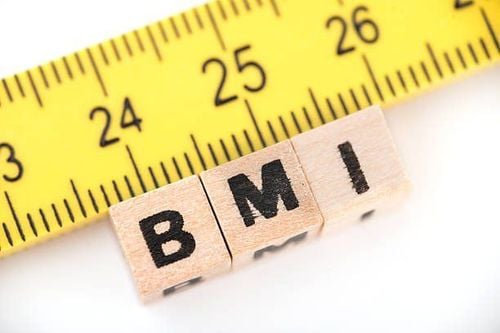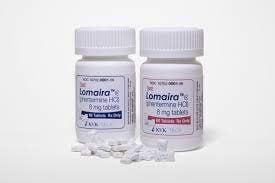This is an automatically translated article.
There are many factors that affect the health status as well as a fit body in men. Among them, weight is a significant contributing factor. So, in men, what is the average weight of men and how does it affect health and appearance in men.1. What is the average weight of Vietnamese men?
According to the survey of the Institute of Nutrition in 2006 on the weight and height indexes of men in Vietnam, the average weight in men is 53.97 kg and the average height is 162.2 cm.Divided by age groups, the average weight of men is as follows:
The average weight of Vietnamese men has been increasing in recent years. In Vietnam, the proportion of adults who are overweight or obese (calculated by BMI) also accounts for about 25% of the population.
According to the report Fitch Solutions Macro Research, obesity is increasing at a rapid rate in Southeast Asian countries. This puts a heavy burden on the health care systems and budgets of regional countries. It is estimated that in 2014, around 1.9 billion adults worldwide were overweight (equivalent to 39% of the population), of which 600 million were obese. Thus, the number of overweight and obese people has more than doubled now compared to 1980.
Vietnam is the country with the fastest increase in the number of obese people (BMI over 25) in the 5-year period. by the end of 2014, at 38%, followed by Indonesia (33%).
However, when calculating the total population, the actual obesity rate in Vietnam is still low (3.6%), compared to neighboring countries like Malaysia (13.3%), or Indonesia (5.7%).

Tỷ lệ người béo phì thật sự ở Việt Nam vẫn còn ở mức thấp (3,6%)
2. How to determine the appropriate weight range in men?
Average weight for men is the simplest way to determine an appropriate weight, but determining a healthy or ideal weight is a bit more complicated.One of the most popular tools for determining ideal weight is body mass index (BMI). BMI is a formula that calculates the height and weight of the body.
To calculate BMI, divide your weight (in kilograms) by the square of your height (in metres). To find out if your BMI is within the normal range, you can refer to the classification below:
Underweight: less than 18.5 Normal: between 18.5 and 24.9 Overweight: any something between 25 and 29.9 Obesity: greater than 30 Although BMI does not directly reflect body fat, its results are strongly correlated with results of direct body fat measures.
Several methods of measuring body fat such as:
Measurement of skin thickness Density meter, compares weight measured in air with weight measured in water Bioelectrical impedance analysis ( BIA), which uses a scale that incorporates electrodes; The more fat in the body, the greater the resistance.

Một trong những công cụ phổ biến nhất để xác định mức cân nặng lý tưởng là chỉ số khối cơ thể (BMI)
3. The relationship between height and weight?
BMI is always a good tool to assess whether your weight is within the normal range, underweight or overweight. For example, an athlete may weigh more than a non-athlete of the same height, but be in better physical condition and health. This is because muscle mass in people who are physically active is more than fat, which contributes to an increase in body weight.Gender is also a contributing factor to BMI. Women tend to store more body fat than men. Similarly, age is also an important factor, older adults tend to have more body fat and less muscle mass than younger adults of the same height.
Table: Ideal weight for height in men
4. What are some ways to determine body composition ratios?
One of the main limitations of BMI is that it determines a person's body composition. A slim man and a chubby man are of the same height and may have very different weights but both give a well-proportioned body composition.There are other measurement methods that can help determine more accurately whether your weight is appropriate and healthy.
4.1. Waist-to-hip ratio The waist-to-hip ratio is an indicator that has more advantages than BMI for determining body proportions. Waist-to-hip ratio is important because if the body's weight is mainly concentrated in the abdominal area, it will reduce the increased risk of certain health conditions such as cardiovascular disease and type diabetes. 2.
To determine your waist correctly, you need to adhere to the following principles:
Posture when measuring: stand upright with feet shoulder width apart. Place the tape measure around the waist so that the tape measure is centered between the last rib and the highest part of the pelvis (iliac crest) Exhale gently and then determine the waist measurement, do not tighten the tape measure excessively, and do not let the tape measure too loose. You can repeat the measurement in triplicate and average these results. In 2008, the World Health Organization (WHO) recommended a maximum waist-to-hip ratio of 0.90 for men and 0.85 for women. When this ratio is above 1 in men and 0.9 in women, it increases the risk of health problems.
Despite its many applications, the waist-to-hip ratio is not recommended for all subjects. Certain groups of subjects such as children and people with BMI over 35 will need other more accurate methods to assess body weight.
4.2. Body Fat Percentage There are different ways to determine body fat percentage, including measuring skin thickness and measuring fat density. Your doctor or personal trainer can do this survey.
Some algorithms can also be used to estimate body fat percentage based on metrics such as height, weight and wrist circumference.
The American Council on Exercise (ACE), an organization for fitness professionals, uses the following classifications of body fat percentages for men:
5. How can you best manage your weight?
Maintaining a healthy weight can help prevent a variety of problems, such as:Cardiovascular disease Type 2 diabetes Arthritis If you are planning to lose weight to gain weight Ideally, here are some key steps to help you get there.
5.1. Set realistic weight loss goals Instead of setting a goal of losing too much weight, aim for smaller goals. For example, instead of being set to lose 20kg per year, aim to lose about 0.5kg per week.
5.2. Follow a healthy diet The diet should focus mainly on the following foods:
Fruits Vegetables Grains Low-fat or fat-free milk Lean protein Nuts and seeds

Hạn chế tiêu thụ đường bổ sung, rượu và chất béo bão hòa
Start by cutting one portion of your daily diet in half. If you used to eat two slices of pizza every night, now eat just one slice and add some salad.
5.4. Exercise Daily Set a goal of exercising for 30 to 40 minutes per day or at least 150 minutes per week. Your exercise regimen should include cardio, strength training, and flexibility exercises. You can also practice with a friend or family member to increase the effectiveness.
6. Some notes on average weight in men?
Although 175cm tall and 90kg weight might be the average for a man in the United States, when calculating a BMI of 29.1 – according to the overweight classification, this BMI represents overweight. Average does not always mean ideal.There are many formulas and indicators used to calculate ideal weight for height. However, no method is perfect.
Normal weight does not always guarantee good health. You can have a normal BMI, but if you smoke and don't exercise or eat right, you're still at risk for cardiovascular disease and other underlying conditions.
If you are concerned about your health, talk to your doctor. Your doctor can help you understand exactly where your weight is and how it relates to your overall health. If needed, your doctor can help establish a good goal weight for you and discuss strategies for getting there.
Please dial HOTLINE for more information or register for an appointment HERE. Download MyVinmec app to make appointments faster and to manage your bookings easily.
Article referenced source: healthline.com












